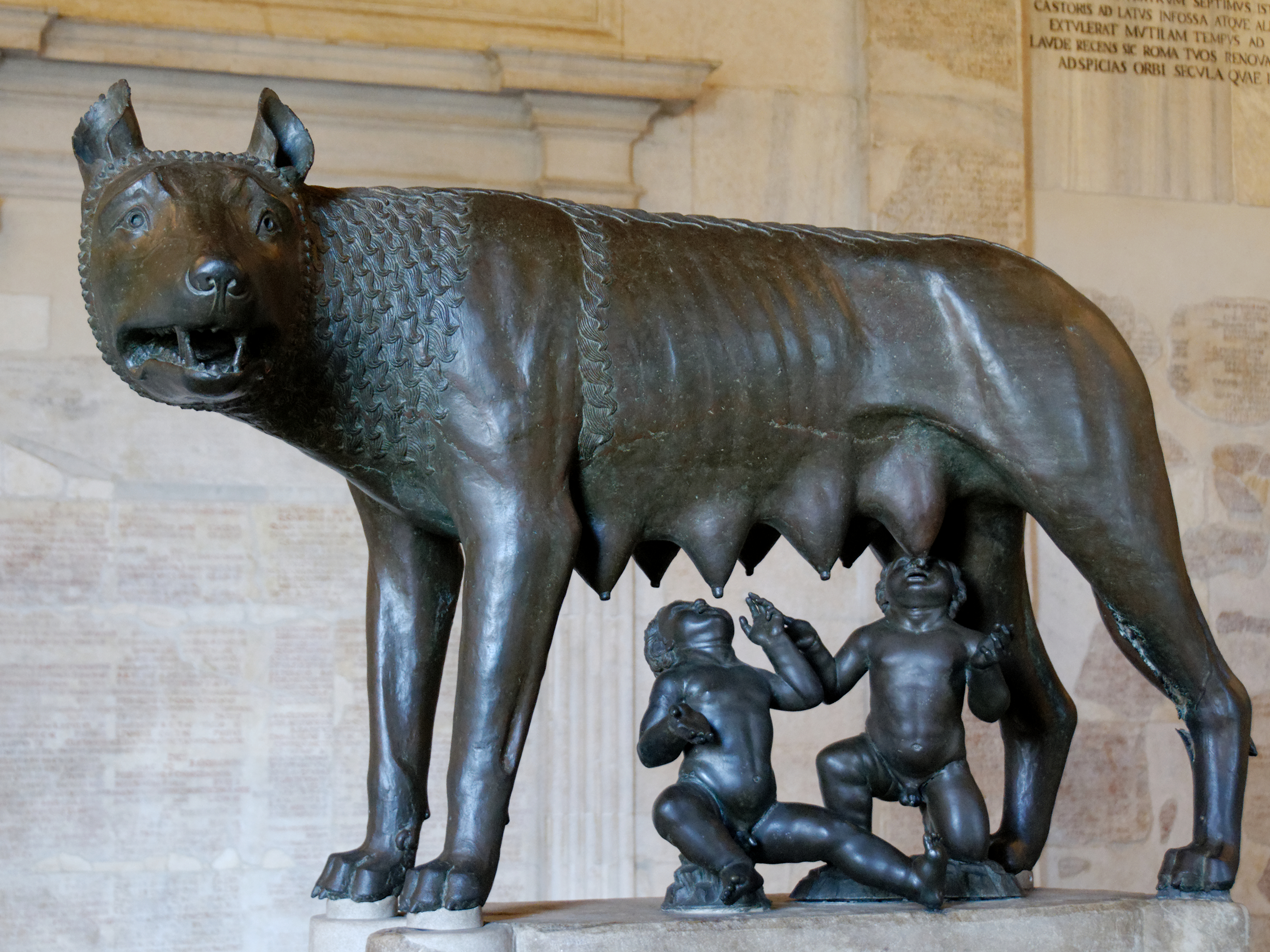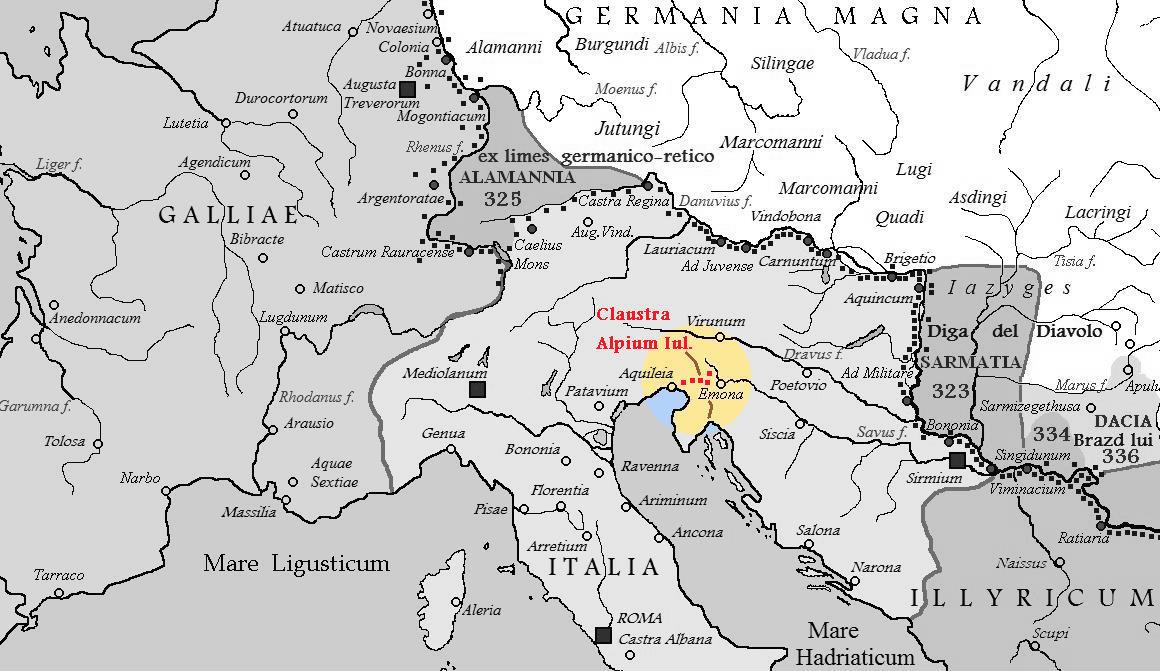|
Kalce, Logatec
Kalce (, german: Kauze) is a settlement southwest of Logatec in the Inner Carniola region of Slovenia. Geography Kalce includes the hamlets of Grčarevski Vrh (german: Gartschareuzer Anhöhe) to the southeast and Gruden to the west. Name Kalce was attested in historical sources in 1499 as ''Kalecz''. Today's name is an accusative plural of ''Kalec'', reanalyzed as a feminine nominative plural. It is derived from ''*kalьcь'', a diminutive of ''*kalъ'' 'mud, pond, cloudy water', referring to a local geographical feature. Cultural heritage Near the village is the Lanišče Roman fortress, a restored part of the Roman ''Claustra Alpium Iuliarum'' system of northern defence walls and fortresses. Archaeological excavations in the 1960s determined that it was in use in the late 4th century AD and was probably destroyed during the war between Magnus Maximus and Theodosius in 388. Mass grave Kalce is the site of a mass grave associated with the Second World War. The Repiše Shaft Mas ... [...More Info...] [...Related Items...] OR: [Wikipedia] [Google] [Baidu] |
Flag Of Slovenia
The national flag of Slovenia ( sl, zastava Slovenije) features three equal horizontal bands of white (top), blue, and red, with the Coat of arms of Slovenia located in the upper hoist side of the flag centered in the white and blue bands. The coat of arms is a shield with the image of Mount Triglav, Slovenia's highest peak, in white against a blue background at the center; beneath it are two wavy blue lines representing the Adriatic Sea and local rivers, and above it are three six-pointed golden stars arranged in an inverted triangle which are taken from the coat of arms of the Counts of Celje, the great Slovene dynastic house of the late 14th and early 15th centuries. The flag's colors are considered to be Pan-Slavism, Pan-Slavic, but they actually come from the Middle Ages, medieval coat of arms of the Duchy of Carniola, consisting of 3 stars, a mountain, and three colors (red, blue, yellow). crescent. The existing Slovene tricolor was raised for the first time in history duri ... [...More Info...] [...Related Items...] OR: [Wikipedia] [Google] [Baidu] |
Ancient Rome
In modern historiography, ancient Rome refers to Roman civilisation from the founding of the city of Rome in the 8th century BC to the collapse of the Western Roman Empire in the 5th century AD. It encompasses the Roman Kingdom (753–509 BC), Roman Republic (509–27 BC) and Roman Empire (27 BC–476 AD) until the fall of the western empire. Ancient Rome began as an Italic settlement, traditionally dated to 753 BC, beside the River Tiber in the Italian Peninsula. The settlement grew into the city and polity of Rome, and came to control its neighbours through a combination of treaties and military strength. It eventually dominated the Italian Peninsula, assimilated the Greek culture of southern Italy (Magna Grecia) and the Etruscan culture and acquired an Empire that took in much of Europe and the lands and peoples surrounding the Mediterranean Sea. It was among the largest empires in the ancient world, with an estimated 50 to 90 million inhabitants, roughly ... [...More Info...] [...Related Items...] OR: [Wikipedia] [Google] [Baidu] |
John The Evangelist
John the Evangelist ( grc-gre, Ἰωάννης, Iōánnēs; Aramaic: ܝܘܚܢܢ; Ge'ez: ዮሐንስ; ar, يوحنا الإنجيلي, la, Ioannes, he, יוחנן cop, ⲓⲱⲁⲛⲛⲏⲥ or ⲓⲱ̅ⲁ) is the name traditionally given to the author of the Gospel of John. Christians have traditionally identified him with John the Apostle, John of Patmos, and John the Presbyter, although this has been disputed by most modern scholars. Identity The Gospel of John refers to an otherwise unnamed "disciple whom Jesus loved", who "bore witness to and wrote" the Gospel's message.Theissen, Gerd and Annette Merz. The historical Jesus: a comprehensive guide. Fortress Press. 1998. translated from German (1996 edition). Chapter 2. Christian sources about Jesus. The author of the Gospel of John seemed interested in maintaining the internal anonymity of the author's identity, although interpreting the Gospel in the light of the Synoptic Gospels and considering that the author n ... [...More Info...] [...Related Items...] OR: [Wikipedia] [Google] [Baidu] |
Mass Graves In Slovenia
Mass graves in Slovenia were created in Slovenia as the result of extrajudicial killings during and after the Second World War. These clandestine mass graves are also known as "concealed mass graves" ( sl, prikrita grobišča) or "silenced mass graves" () because their existence was concealed under the communist regime from 1945 to 1990.Ferenc, Mitja, & Ksenija Kovačec-Naglič. 2005. ''Prikrito in očem zakrito: prikrita grobišča 60 let po koncu druge svetovne vojne''. Ljubljana: Muzej novejše zgodovine. Some of the sites, such as the mass graves in Maribor, include some of the largest mass graves in Europe. Nearly 600 such sites have been registered by the Commission on Concealed Mass Graves in Slovenia, containing the remains of up to 100,000 victims. They have been compared by the Slovenian historian Jože Dežman to the Killing Fields in Cambodia. Background Many of the mass graves were created during the war, but the larger sites date from after the war. The wartime grav ... [...More Info...] [...Related Items...] OR: [Wikipedia] [Google] [Baidu] |
Theodosius I
Theodosius I ( grc-gre, Θεοδόσιος ; 11 January 347 – 17 January 395), also called Theodosius the Great, was Roman emperor from 379 to 395. During his reign, he succeeded in a crucial war against the Goths, as well as in two civil wars, and recognized the Catholic orthodoxy of Nicene Christians as the Roman Empire's state religion. Theodosius was the last emperor to rule the entire Roman Empire before its administration was permanently split between two separate courts (one western, the other eastern). Born in Hispania, Theodosius was the son of a high-ranking general, Theodosius the Elder, under whose guidance he rose through the ranks of the Roman Army. Theodosius held independent command in Moesia in 374, where he had some success against the invading Sarmatians. Not long afterwards, he was forced into retirement, and his father was executed under obscure circumstances. Theodosius soon regained his position following a series of intrigues and execu ... [...More Info...] [...Related Items...] OR: [Wikipedia] [Google] [Baidu] |
Magnus Maximus
Magnus Maximus (; cy, Macsen Wledig ; died 8 August 388) was Roman emperor of the Western Roman Empire from 383 to 388. He usurped the throne from emperor Gratian in 383 through negotiation with emperor Theodosius I. He was made emperor in Britannia and Gaul the next year while Gratian's brother Valentinian II retained Italy, Pannonia, Hispania, and Africa. In 387, Maximus's ambitions led him to invade Italy, resulting in his defeat by Theodosius I at the Battle of Poetovio in 388. In the view of some historians, his death marked the end of direct imperial presence in Northern Gaul and Britain. Life Birth, army career Maximus was born in Gallaecia, on the estates of Count Theodosius (the Elder) of the Theodosian dynasty, to whom he claimed to be related. J. B. Bury ed. (1924)''The Cambridge Medieval History'' p. 238 Maximus was a distinguished general; he was probably a junior officer in Britain in 368, during the quelling of the Great Conspiracy. He served under Coun ... [...More Info...] [...Related Items...] OR: [Wikipedia] [Google] [Baidu] |
Archaeology
Archaeology or archeology is the scientific study of human activity through the recovery and analysis of material culture. The archaeological record consists of Artifact (archaeology), artifacts, architecture, biofact (archaeology), biofacts or ecofacts, archaeological site, sites, and cultural landscapes. Archaeology can be considered both a social science and a branch of the humanities. It is usually considered an independent academic discipline, but may also be classified as part of anthropology (in North America – the four-field approach), history or geography. Archaeologists study human prehistory and history, from the development of the first stone tools at Lomekwi in East Africa 3.3 million years ago up until recent decades. Archaeology is distinct from palaeontology, which is the study of fossil remains. Archaeology is particularly important for learning about prehistoric societies, for which, by definition, there are no written records. Prehistory includes ove ... [...More Info...] [...Related Items...] OR: [Wikipedia] [Google] [Baidu] |
Claustra Alpium Iuliarum
(Latin for 'Barrier of the Julian Alps'; hereby, the term Julian Alps refers to the wider mountainous and hilly region from the Julian Alps to the Kvarner Gulf) was a defense system within the Roman Empire between Italia and Pannonia that protected Italy from possible invasions from the East. It secured the Postojna Gate, the land link between the eastern and western part of the empire, and thus the Claustra represented an inner border defense of the empire. Unlike a linear rampart, the Claustra consisted of a series of interconnected fortifications with its center at Castra ad Fluvium Frigidum (in the area of today's town of Ajdovščina, the Vipava Valley); other important fortresses were ''Ad Pirum'' on today's Hrušica Plateau and '' Tarsatica'', now a part of the city of Rijeka. They had been governed from the town of Aquileia. Development In the year 6 AD the Great Illyrian Revolt took place threatening the Roman heartland. Subsequently, in order to protect Italy, a serie ... [...More Info...] [...Related Items...] OR: [Wikipedia] [Google] [Baidu] |
Lanišče Roman Fortress
Lanišče (; german: Lanische) is a settlement immediately east of Škofljica in central Slovenia. The Municipality of Škofljica is part of the traditional region of Lower Carniola and is now included in the Central Slovenia Statistical Region. It includes the hamlet of LisičjeSavnik, Roman, ed. 1971. ''Krajevni leksikon Slovenije'', vol. 2. Ljubljana: Državna založba Slovenije, p. 417. (german: Gairau). Lisičje Manor Lisičje Manor stands in the hamlet of Lisičje, northwest of the village center. The building dates from 1560 and its first known owner was Lenart Merharič. The castle was renovated in the 17th century and a castle garden was created by Lenart Fabjančič-Merharič. Before the Second World War, the castle, which contained an extensive library and valuable paintings, was owned by the Englishwoman Mary Lloyd. Later soldiers were quartered in the building, and after the war it was taken over by the Slovene Ethnographic Museum. Church The local church is dedic ... [...More Info...] [...Related Items...] OR: [Wikipedia] [Google] [Baidu] |
Slovenia
Slovenia ( ; sl, Slovenija ), officially the Republic of Slovenia (Slovene: , abbr.: ''RS''), is a country in Central Europe. It is bordered by Italy to the west, Austria to the north, Hungary to the northeast, Croatia to the southeast, and the Adriatic Sea to the southwest. Slovenia is mostly mountainous and forested, covers , and has a population of 2.1 million (2,108,708 people). Slovenes constitute over 80% of the country's population. Slovene, a South Slavic language, is the official language. Slovenia has a predominantly temperate continental climate, with the exception of the Slovene Littoral and the Julian Alps. A sub-mediterranean climate reaches to the northern extensions of the Dinaric Alps that traverse the country in a northwest–southeast direction. The Julian Alps in the northwest have an alpine climate. Toward the northeastern Pannonian Basin, a continental climate is more pronounced. Ljubljana, the capital and largest city of Slovenia, is geogra ... [...More Info...] [...Related Items...] OR: [Wikipedia] [Google] [Baidu] |


.jpg)


_A_king%2C_possibly_Magnus_Maximus%2C_holding_a_sceptre.jpg)
.jpg)

